- News
- Reviews
- Bikes
- Components
- Bar tape & grips
- Bottom brackets
- Brake & gear cables
- Brake & STI levers
- Brake pads & spares
- Brakes
- Cassettes & freewheels
- Chains
- Chainsets & chainrings
- Derailleurs - front
- Derailleurs - rear
- Forks
- Gear levers & shifters
- Groupsets
- Handlebars & extensions
- Headsets
- Hubs
- Inner tubes
- Pedals
- Quick releases & skewers
- Saddles
- Seatposts
- Stems
- Wheels
- Tyres
- Tubeless valves
- Accessories
- Accessories - misc
- Computer mounts
- Bags
- Bar ends
- Bike bags & cases
- Bottle cages
- Bottles
- Cameras
- Car racks
- Child seats
- Computers
- Glasses
- GPS units
- Helmets
- Lights - front
- Lights - rear
- Lights - sets
- Locks
- Mirrors
- Mudguards
- Racks
- Pumps & CO2 inflators
- Puncture kits
- Reflectives
- Smart watches
- Stands and racks
- Trailers
- Clothing
- Health, fitness and nutrition
- Tools and workshop
- Miscellaneous
- Buyers Guides
- Features
- Forum
- Recommends
- Podcast
review
£49.99
VERDICT:
Grippy and fast-rolling road-cum-gravel tyre with added puncture protection over the standard model
Grippy compound for high speed road miles
Easy to fit tubeless
Weight:
353g
Contact:
At road.cc every product is thoroughly tested for as long as it takes to get a proper insight into how well it works. Our reviewers are experienced cyclists that we trust to be objective. While we strive to ensure that opinions expressed are backed up by facts, reviews are by their nature an informed opinion, not a definitive verdict. We don't intentionally try to break anything (except locks) but we do try to look for weak points in any design. The overall score is not just an average of the other scores: it reflects both a product's function and value – with value determined by how a product compares with items of similar spec, quality, and price.
What the road.cc scores meanGood scores are more common than bad, because fortunately good products are more common than bad.
- Exceptional
- Excellent
- Very Good
- Good
- Quite good
- Average
- Not so good
- Poor
- Bad
- Appalling
The Panaracer GravelKing Plus TLC is ideal if you want a wide, slick tyre for road use but one that is also capable of taking you off the beaten track thanks to its strong build and decent puncture protection. It's a decent price too.
Just under a year ago Pat tested the standard GravelKing and was mightily impressed. The Plus model has some added puncture protection to increase durability, which has added about 40g per tyre in this 35mm size, but they've retained their very fast and grippy ride.
> Find your nearest dealer here
The ZSG compound has a tacky feel to it and I was really impressed with the adhesion levels on the road in the bends, especially when taking technical downhills at speed. In the dry they are very good indeed, and offer pretty much the same levels of grip in the wet on all but the greasiest of roads.
If they do start to break traction, they seem to do it in a progressive way rather than just letting go without warning (unless it's ice, obviously).
They are also surprisingly supple feeling for such a durable tyre. In their construction, Panaracer uses what it calls AX-a (Advanced Extra Alpha), an extremely narrow cord that's weaved at high density into the casing for lightness and flexibility, which is obviously what's helping that suppleness.
Off-road grip is fine if you are on a dry, compact surface and their 35mm width benefits cornering. With a slick tread, though, they'll be no use in the mud.
In a bid to put the puncture fairy on the dole, the GravelKing Plus uses a puncture-resistant belt and Pro-Tite Shield Plus which, according to Panaracer, is: "Ultra-strong reinforcing material wrapped around the whole tyre, with nylon taffeta lining the treads to provide added protection against side cuts as well as punctures from dented rims or piercings."
Pat didn't have any issues with punctures on the standard GravelKing, which doesn't have the Pro-Tite, so it may be overkill but I didn't flat throughout the entire test period – even going out of my way to ride over fresh hedge clippings and hitting sharp-edged rocks on the gravel paths.
This version of the GravelKing Plus is tubeless-compatible (you can also get a tubed version for the same price), and fitting was no issue whatsoever. Installing them on a set of Hunt 4-Season Gravel Disc X-wide wheels was a quick and painless exercise as they just popped straight on.
The sidewalls of the Panaracers aren't porous, and I didn't have any issues with sealant leaking out when first inflating to the recommended 60psi maximum pressure.
The only thing you need to watch out for is width if your frame's tyre clearance isn't massive. On a set of modern wide rims like the Hunts, these 35mm tyres measured up at 37.5mm.
Value
Priced at £49.99, the Panaracers sit competitively against some tough opposition.
The 700C version of the Vittoria Terreno Zero TNT is available in a 35mm width and a near-smooth tread pattern like the GravelKings. They are quite a bit lighter at 248g each compared to the Panaracer's 353g, and a little cheaper too at £44.99.
We can't talk smooth road/off-road tyres without mentioning the Schwalbe G-One, a very good tyre indeed, but with an rrp of over 60 quid they make the GravelKings looks a relative bargain, especially considering how similar the ride qualities are.
Overall, the GravelKing Plus TLCs are a very good option if you want a wide tyre for road use or to tackle dry, compact gravel trails in the summer months.
Verdict
Grippy and fast-rolling road-cum-gravel tyre with added puncture protection over the standard model
road.cc test report
Make and model: Panaracer GravelKing Plus TLC 700 x 35 tyre
Size tested: 700 x 35
Tell us what the product is for and who it's aimed at. What do the manufacturers say about it? How does that compare to your own feelings about it?
Panaracer says, "Gravel and dirt. Rough and smooth pavement. The most durable version of the 'GravelKing' series."
The small increase in weight over the standard GravelKing is worth taking for the added protection.
Tell us some more about the technical aspects of the product?
Panaracer says, "The strongest version of GravelKing now has even better puncture resistance, with the use of ProTite Shield Plus for withstanding tough conditions. Developed with ZSG compound to enhance durability and wear resistance. Lightweight, ultra-thin 'Ax-Alpha Cord' has been used to make it even lighter in weight."
Rate the product for quality of construction:
9/10
Rate the product for performance:
9/10
Rate the product for durability:
9/10
Rate the product for weight (if applicable)
7/10
Rate the product for comfort (if applicable)
8/10
Rate the product for value:
6/10
Tell us how the product performed overall when used for its designed purpose
They work well on the road while being tough enough to cope with gravel tracks.
Tell us what you particularly liked about the product
A great all-rounder.
Tell us what you particularly disliked about the product
There isn't really anything to dislike.
How does the price compare to that of similar products in the market, including ones recently tested on road.cc?
They are in the right ballpark for a quality wide, slick tyre, being just a little more expensive than the Vittorias but cheaper than Schwalbe whose models I've mentioned in the review.
Did you enjoy using the product? Yes
Would you consider buying the product? Yes
Would you recommend the product to a friend? Yes
Use this box to explain your overall score
A very good road tyre that will also take on the firmer off-road surfaces. It's fast, grippy, robust and not a bad price either.
About the tester
Age: 41
I usually ride: This month's test bike My best bike is: B'Twin Ultra CF draped in the latest bling test components
I've been riding for: Over 20 years I ride: Every day I would class myself as: Expert
I regularly do the following types of riding: time trialling, commuting, club rides, sportives, fixed/singlespeed,
Since writing his first bike review for road.cc back in early 2009 senior product reviewer Stu has tested more than a thousand pieces of kit, and hundreds of bikes.
With an HND in mechanical engineering and previous roles as a CNC programmer/machinist, draughtsman and development engineer (working in new product design) Stu understands what it takes to bring a product to market. A mix of that knowledge combined with his love of road and gravel cycling puts him in the ideal position to put the latest kit through its paces.
He first made the switch to road cycling in 1999, primarily for fitness, but it didn’t take long for his competitive side to take over which led to around ten years as a time triallist and some pretty decent results. These days though riding is more about escapism, keeping the weight off and just enjoying the fact that he gets to ride the latest technology as part of his day job.
Latest Comments
- Aluminium can 2 sec ago
So there's electronics and computers and motors for gear changes and pumping up or deflating tyres. Why not just motorise the whole bike and be...
- ktache 1 hour 56 min ago
Quest are showing the Paris Roubaix highlights at 11 both days.
- chrisonabike 2 hours 41 min ago
Pretty sure a lot of that "more space for motor vehicles" was because fewer motor vehicles (also marginally "smaller motor vehicles")....
- David9694 3 hours 28 min ago
I get the impression he represented himself, came over as a bit of an ass and received a ban, when a lawyer might have got him spared that.
- Rendel Harris 3 hours 31 min ago
Well if you ever get the chance and you feel yourself flagging give me a shout, happy to put in a shift.
- Laz 3 hours 39 min ago
OMG- that's so self centred....what about the brotherhood and sisterhood of enjoying a ride and sharing a happy wave with a fellow rider out...
- thax1 4 hours 6 min ago
Cycliq certainly seemed to let a lot of people down in the early days. I held off until the 12 Sport came out, but have been impressed....
- ktache 4 hours 7 min ago
My better half seems to like giving me pressies of Rapha clothing. I am wearing their casual hoodie right now, and very nice it is too. First off...
- thax1 4 hours 18 min ago
Push on through foot numbness and you then arrive at agonising foot cramp....
- Destroyer666 4 hours 55 min ago
Oh dear, to your own lack of understanding. I was not referring to your vague generalisation of "people", I was referring to a particular...



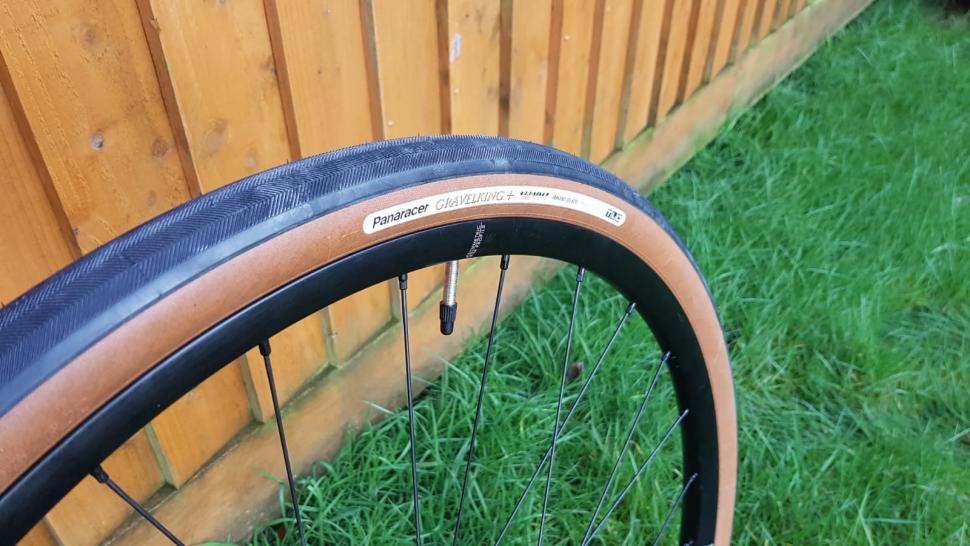
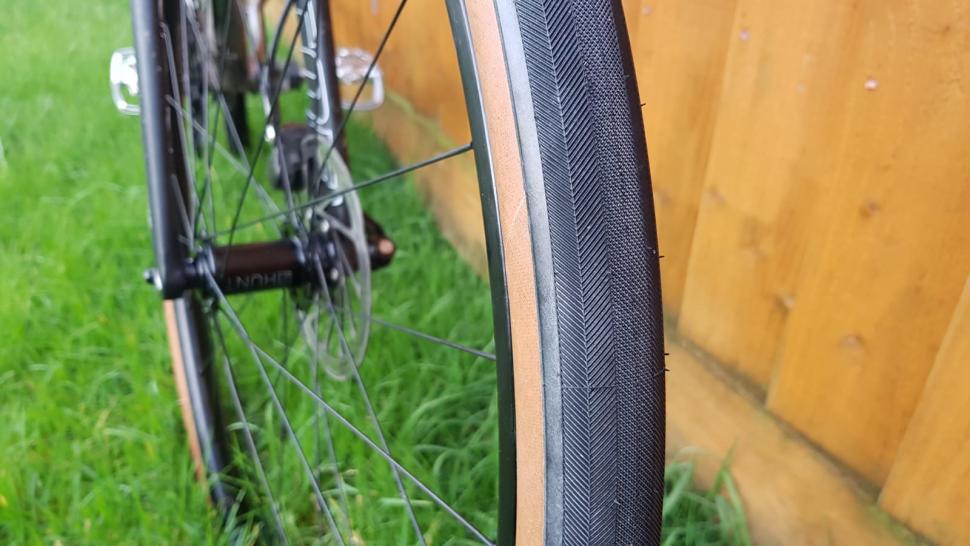

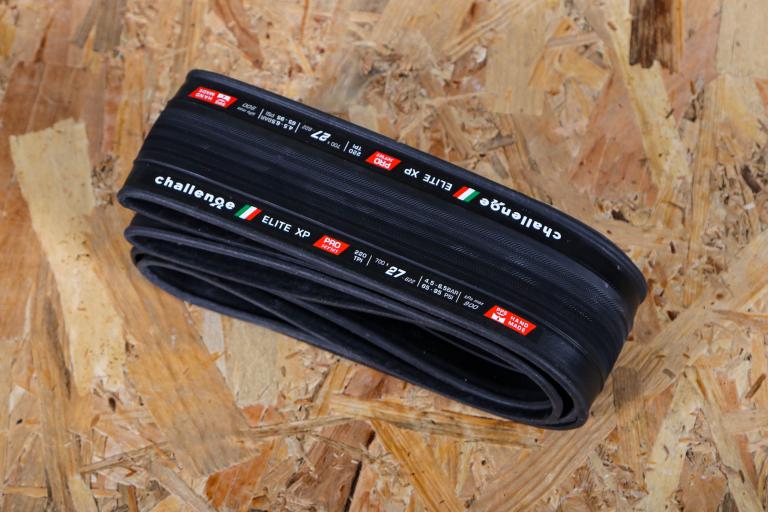
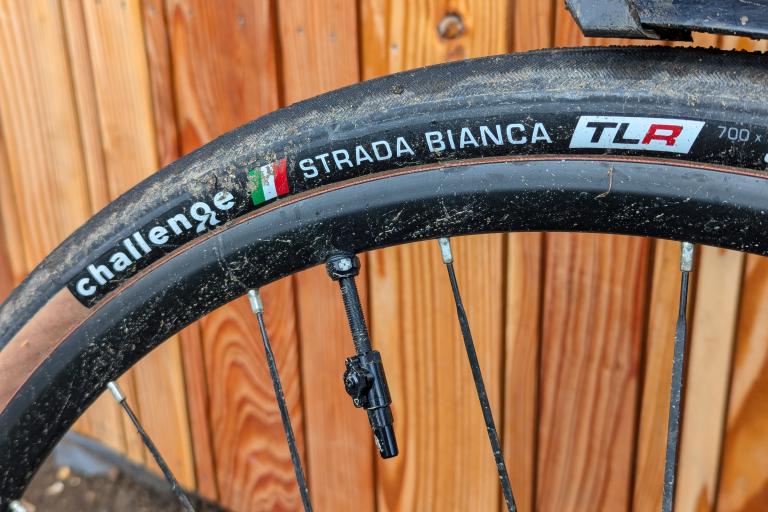
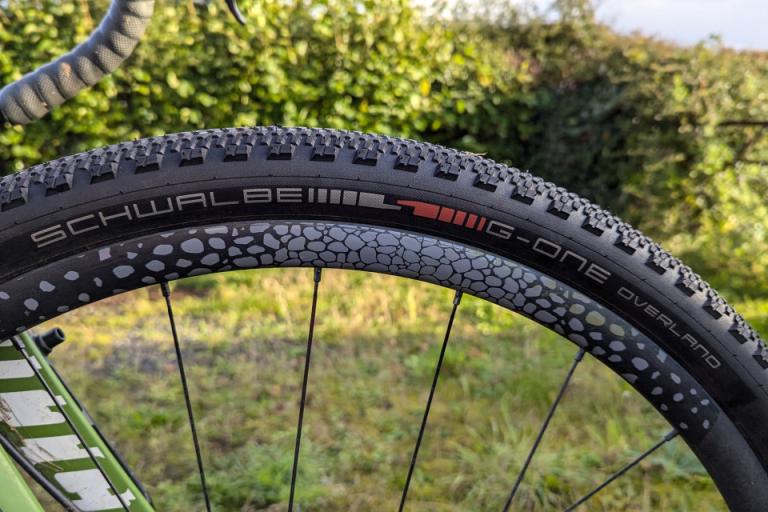
Add new comment
27 comments
Well these are nice tyres for sure. I happily rode them for PBP without a worry. And then winter happened. These tyres *really* dont like small flinty things and the wet. I had multiple punctures over a short period corresponding to wet conditions with small bits of glass and cruft making their way through the protection. As it was winter it was dark both ways to work and even with inspections I was getting more and more. Yes they had a couple of thousand k on them but they weren't f*cked as there was still plenty of 'file' left. So - a good summer tyre, not for urban comutting in the wet.
you just have to try a tyre /wheel combo that match I ride schwalbe durano dd on roads and some pretty narly forest and gravel tracks and bridleways last pair did me 8000km without a puncture the current set have punctured once in the first 5000km not the fastest rollers on the road but not shabby either
The eyewatering prices of these "gravel" specific tyres set me off in search of less fashionable but cheaper alternatives. And not tubeless either, I remain unconvinced of the benefits relative to cost of converting. I just don't suffer enough real world punctures to give it cause for serious consideration.
The Panaracer Pasela wired tyre has the same protection, lots of width options and you'll get a pair for the price of one of these Gravel Kings. I changed out from WTB Nanos about a month ago because in reality less than 5% of my riding is ever on gravel. The Paselas have been great so far, much zippier than Nanos, good grip, the gumwalls are lovely and wash up well. They can handle rougher stuff, nae punctures thus far. Nice and easy to get on/off the rim too which is an important consideration if you're still running tubes. WTB Riddlers for example were an absolute 'mare! Seen some criticism of weak sidewalls but not been an issue for me yet.
And for an absolute bargain fat road plus type tyre the Continental Sport Contact tyres over at Planet X for £7 each are an absolute steal. F**k fashion let's ride!
SuperCommuter or SuperLuddite? Decent road tyres cost no more than tubeless tyres do, the setup process in these modern times is no more complicated than tubed tyres and the benefits of less weight, less rolling resistance and greater puncture resistance are clear for all to see. IMHO I don't see why you wouldn't change!
But SuperCommuter's point was about cost/benefit. If you needed to buy new tubeless ready rims, tape, tyres, valves, sealant, and possibly an air tank, it's quite an investment.
Air tank generally not needed any longer; rims need retaping occasionally anyway so not a big deal; valves usually come with wheels; many new wheels tubeless-compatible. I get that buying new stuff is expensive, but it you are buying new stuff anyway or already have it then why you wouldn't go tubeless is beyond me.
But (as I understood it) that wasn't the premise. If your wheels are not already tubeless compatible, then converting is significantly more expensive than just buying a tubeless tyre instead of a tubed one. Yes if I was buying new wheels or a new bike anyway then I would consider going tubeless, but I am also unconvinced that for me it's worth the cost of converting existing bikes.
In 55 years of riding bikes of all descriptions I have never needed to retape a rim. Please expand!
Most rim tape damage comes from installing/removing tyres and being a bit careless/enthusiastic with tyre levers. With non-tubeless, I've re-taped a rim where the tape had shifted and exposed a sharpish edge of a spoke hole which wasn't appreciated by the inner tube. With tubeless, any damage that causes the rim to be non-airtight will also need a re-taping.
I'm presuming they are talking about tubeless tape, which I would suppose needs changing every so often to remain completely airtight, the overlap on mine when I changed tyres over a couple of weeks back, was not as stuck down as I would really like.
Also rim brake rims die relatively quickly, disc brake rims may last far longer than the tape. I have had some tape not looking good when it was time to change the rim.
On my last set of rim brake rims I couldn't easily find any rimtape (26 inch Mavic 717, rare as hens teeth) so had to reuse the stuff from the old wheels (rear rim had cracked slightly due to wear, I felt awful doing it but I needed the bike). One of the jobs to do before I mothball her is to change the rim tape that I eventually managed to find. But that's me.
GP5000 clinchers with latex tubes would be lighter AND faster rolling than the equivalent tubeless setup.
So it boils down to frequency of punctures vs. faff vs. messy sealant.
A small aside but Continental are pretty against the use of latex tubes in their tyres, hence why they don't produce their own latex tubes.
Yikes! Wonder why, have been running them for years now...
I never had many problems running Michelin latex in my conti tyres, and I REALLY like conti tyres, 3 sets of different tyres on 2 bikes.
I always use copious ammounts of talc.
Whisper this, but I've also used latex tubes with their tyres in the past!
Latex tubes are more prone to bursting due to heat build up at the rim which is usually down to prolonged rim braking, Conti state that no latex tubes meet their standards with regards to heat build up:
https://www.cyclingweekly.com/news/product-news/latex-inner-tubes-worth-...
Disc brake bikes don't suffer from heat build up at the rim and latex tubes should be safer with them.
There's also the fact that if they made latex tubes it'd probably just cannibalize sales of their Supersonic tubes.
Actually tubeless GP5000 have a lower rolling resistance than the tubed version 8.3W v 10.0W - see the tests below comparing a wide range of tubed/tubeless/tubular tyres. Corsa Speed have the lowest co-efficient
https://www.bicyclerollingresistance.com/road-bike-reviews/compare
Road.cc referenced a different test in their review of the GP5000TL. Using latex tubes found 1.3W in favour of the clincher set up.
I'm not claiming it's significant either way, just that tubeless isn't necessarily this panacea that it gets sold as.
Edit: "The GP 5000 clincher in 25mm was faster than the tubeless GP 5000 TL 25mm, saving 1.2w at 45kph for a pair of wheels.' It's worth noting the use of the latex inner tube"
Aah, there's none so blind as those who will not see.
I like how given you hadn't invested in a certain spec of wheel, you had a choice to go with a cheaper, heavier (470g vs 353g), less supple tyre, that needs to be run at higher pressures to avoid pinchflats due to needing a tube, and you took it.
(the fact you admit to never riding 'gravel' and then chose not to buy a tyre actually called 'Gravel King' is also sensible)
...isn't choice grand?
It's not SuperCommuter's fault that the tyre has 'gravel' in the name and appears overpriced. Not everyone likes to splash £100 on a pair of everyday tyres.
Seems to me you're too quick to bite their head off with your quasi-religious zeal rather than helpfully point out how easy it is to go tubeless.
I have a Trek with TL-ready Bontrager rims but have no great desire to buy more tools etc and get up to speed with what's required. Perhaps if some 'sold' the benefits to me I'd be more inclined to try it but I'd react negatively to being told I'm stupid / ignorant / backward / Luddite for not doing so (and for expressing my opinion online). Meanwhile I'll keep riding my £16 Duranos and carry a tube and some glueless patches.
Old Continential GP 4000S II are a couple of pence shy of £ 120.00 a pair - but they seem quite popular. Talking about RRP really isn't that useful.
I don't mind paying up to put good tires on a bike I ride alot, but I also get what you're saying. I only dabble in occasional "gravel," riding, using a 90's era MTB bought off the local web classifieds for $250. Expensive tires wouldn't make much sense for that bike. I ended up putting the cheap ($15-$20 each on Amazon/ebay) wire bead Panaracer Comet Hardpack tires on in. They're pretty impressive for the price, and work well for gravel despite originally being offered as XC tires. Panasport must have reached the same conclusion, as they now offer the Comet Hardpacks in a 700x38c version.
Hpefully the "Plus" has added some actual puncture protection. The standard GravelKings were absolutely pitiful for how often they would puncture just on ordinarily broken tarmac!
100% agree, in terms of puncture protection the standard Gravelkings are the worst tyres I've ever used and were unsuitable for British roads.
100% disagree, have ridden mine (tubeless) for hundreds and hundreds of miles mainly on British bridleways. Yes, standard Gravelkings 700x30c and not a single puncture.
Well thay can't get any worse. I honestly had less punctures/mile on normal road riding with a TT tyre (Vittoria Corsa Speed) than with the standard GravelKing...
I'd have to say by and large my experience has been the opposite. I've around 2000km on a non-tubeless set for about a year with I think 3 punctures in that time which given they came in a batch were probably down to me not inspecting the tyre properly when I fixed the first one. As they're on the do everything Croix de Fer they get to see some lovely weather and roads (you think UK roads are bad!) and saw service on some proper rough trails in France last summer. I had the bike up on the stand for a service two weeks ago, and the tyres are still in great nick overall with a fair few thousand km in their future. Their only fault IMHO is they're a bit sketchy when cornering at speed in the wet, but I'd happily go for them again